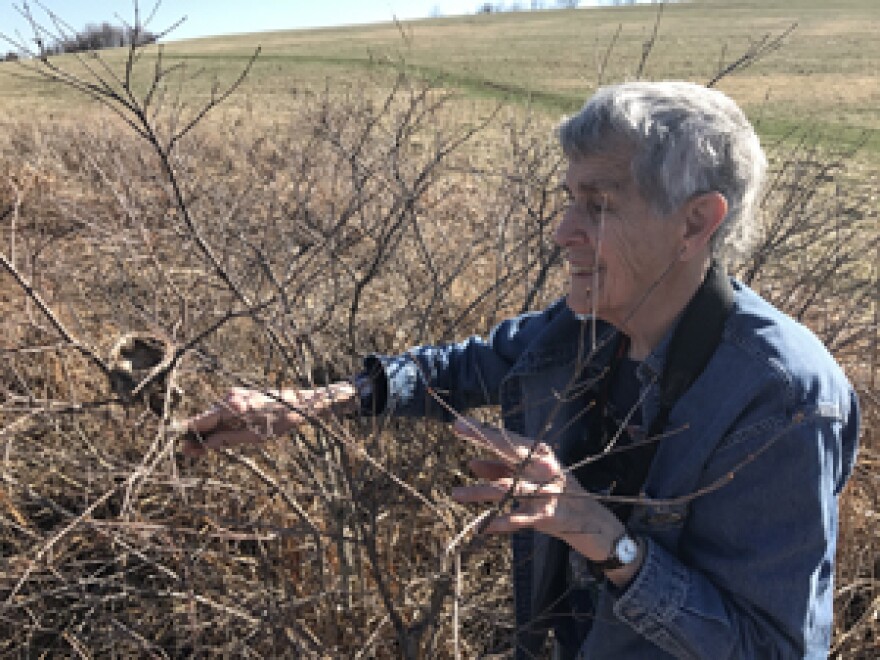When I started spending weekends upstate in the late 1970’s I didn’t know a blue jay from a bluebird. Having grown up a city kid, I owed my early birding education to two sources: my wife, who was raised in the suburbs; and a weekly birding column in the Chatham Courier, a Columbia County newspaper, written by Kate Dunham and her partner Elisabeth Grace.
As informative as the columns were, what stood out even more boldly was the excellence of the writing. It transmitted a passion for nature that took them from the roadsides to the rivers and fields, and sometimes even the swamps of upstate in search of interesting birds.
The women often birded together but wrote separately on alternate weeks.
The first time I met the authors of “The Birders Corner,” as their column was called, was on a rainy July 4th in 1996 after I phoned them to report a possible rare bird.
Actually, my wife is the one who spotted it after the subject crossed the road by a marsh about a mile from our house. But I returned with my binoculars and identified it as a Virginia rail, a small, secretive brownish water bird.
Journalism, especially when it’s an account of something you’ve experienced personally, seldom lives up to expectations. But the column Kate wrote after she and Elisabeth went to the marsh exceeded my hopes and rose to a kind of poetry.
She described stands of cattails whose green fronds “swayed slightly, gracefully beneath the pattering raindrops.”
She told of red-winged blackbirds that “stood guard on these wild watchtowers.”
And green herons “startled into flight.”
But the meditative scene suddenly turned into an adventure story as they spotted not just the rail but also two of her babies and a sora, another water bird that neither of the women had ever seen before.
They reported their findings in the following week’s Chatham Courier, crediting me with the rail.
Needless to say, I had the column framed.
Unfortunately, Kate died in 2006 but Elizabeth continued writing the column regularly, 39 years in all.
And she agreed to go bird watching with me last week at the Ooms Conservation Area, a 160-acre site managed by the Columbia Land Conservancy in Chatham, NY.
It looks like it ought to be in the British Lake District, and includes a large pond surrounded by rolling hills with views of the Catskills and the Taconics.
It’s still early the season; migratory birds are only now starting to arrive in the area from down south. So I didn’t have high expectations.
But I started learning new things as soon as Elisabeth slung her high-powered Swarovski binoculars around her neck and we began our walk.
For example, I was under the impression that bluebird boxes should be far apart. But there were brand new boxes set in pairs around the pond.
Elisabeth explained that’s because early arriving swallows tend to take over the homes before bluebirds can. But they’re territorial and, while they refuse to let a fellow swallow move in next door, they’re perfectly content having bluebirds as neighbors. Twin boxes increase the odds of a bluebird claiming ownership of at least one of them.
I was as interested in learning about Elisabeth as I was in sighting my first Yellow-rumped warbler or Scarlet tanager of the season.
She told me she grew up in Great Britain during World War II and moved to Philadelphia as a social worker in the early 1970’s. That’s where she met Kate, who was also a social worker. Together, they came to Columbia County in 1975 and took over the birding column a few years later.
An osprey flew overhead, though Elisabeth reported that none have yet taken up residence on either of the Land Conservancy’s two stands, set up for that purpose, high on telephone poles.
While we didn’t see many birds in the end, bird watching doubles as a form of meditation. The more you’re able to synch your senses to nature, the greater the likelihood you’ll spot something. Or at least depart feeling more at peace with the world than when you arrived.
While Elisabeth wears her knowledge lightly, she corrected me when I pointed out what I thought was a hummingbird nest left over from last season.
“It’s a typical warbler nest, beautifully made,” she explained, as she observed the way its owner had lined the bottom with milkweed.
“It’s much too big for a hummingbird,” she added. “Hummingbird nests are minute.”
Beavers are apparently also a subject of minor, if involuntary, expertise. Elisabeth pointed out the damage they’d wrought to trees around the pond and some muddy water on the pond’s edge that she suspected might have been the result of very recent beaver activity.
If it wasn’t, certainly a large tree that bore their teeth marks and that now leaned dangerously against some telephone wires was.
I got an email from Elisabeth almost as soon as I returned home, letting me know she’s already reported the downed tree to the phone company.
Being a birder has a way of increasing one’s sense of responsibility -- not only for birds but also for their habitat and for all the other animals, us included, that share it with them.
Ralph Gardner Jr. is a journalist who divides his time between New York City and Columbia County. More of his work can be found at ralphgardner.com
The views expressed by commentators are solely those of the authors. They do not necessarily reflect the views of this station or its management.







